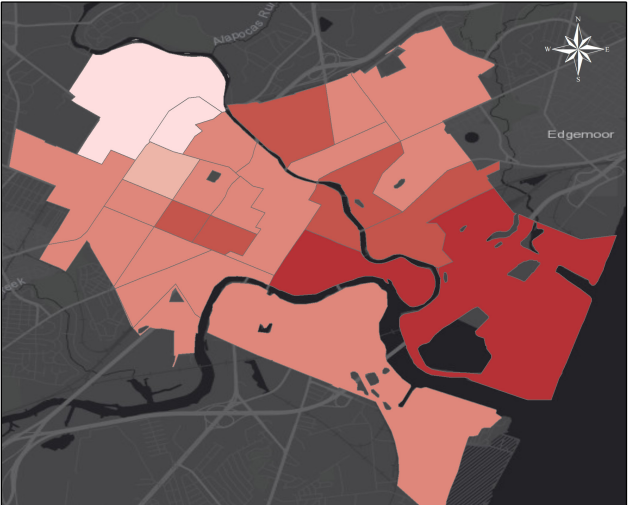By: Sophia Schmidt
A vast divide in the amount of wealth accumulated by white families and families of color persists in the U.S.— and by some reports, has grown in the past few decades.

That divide is reflected in Delaware’s largest city, where the median household income for black and Latino households is half that of white households— according to a study by D.C.-based nonprofit Prosperity Now.
“The average median household income for [Wilmington’s] white households is $60,772, whereas for blacks it’s half of that,” said Ebony White, associate director for the nonprofit’s racial wealth divide initiative.
White says wealth is reflective of more than just income. “A lot of the wealth that would have come to Native Americans, African Americans, Latinos was stripped from us. And so we don’t have that generational wealth that others may have.”
The Racial Wealth Divide in Wilmington report paints Wilmington as a microcosm of racial inequality in larger American cities. It found 33 percent of black households in Wilmington have zero net worth— which can only be said for 15 percent of white households.
The majority-black city’s homeownership rate stands at 58.2 percent for white residents, nearly twenty points higher than that for black and asian residents, and roughly double that for Latino residents. According to the study, Wilmington’s black-white racial divide in homeownership is smaller than the national divide.
Hispanic residents of Wilmington lead in liquid asset poverty, with nearly 65 percent of Hispanic households lacking sufficient savings to replace income at the poverty level for three months if they were to experienced a sudden job loss, medical emergency or other financial crisis. Black residents lead in income poverty, with roughly 27 percent of black families in Wilmington earning below the federal poverty level for the past 12 months.
The racial wealth divide study also tracked educational attainment. Almost 93 percent of white residents hold a high school degree or higher, while just over 81 percent of black residents do. More than 35 percent of Latinos in Wilmington lack a high school degree, according to the study.
Ebony White says Wilmington experienced a “white flight,” or a decrease in the city’s white population, through the 1950s and 1960s— resulting in a drop in the city’s overall median income. According to the report, New Castle County’s economy has been “much stronger” than that of Wilmington since 1980, with residents of all races “better positioned financially” in the surrounding county than in the city.
The study found that following the Financial Center Development Act of Delaware in 1981, incomes across all major racial and ethnic groups increased in Wilmington. However, the Great Recession hit residents of color harder than it hit whites, according to the report. It regressed median incomes for Wilmington’s black and Latino residents by more than 20 percent, while only regressing the white median income by less than 5 percent.
The Racial Wealth Divide in Wilmington study was conducted as part of Prosperity Now’s Building High Impact Nonprofits of Color initiative, which is working to support several local nonprofits including Christina Cultural Arts Center, the Urban League and the Kingswood Community Center. It is funded by JPMorgan Chase.
Credit: Sophia Schmidt | Delaware Public Media